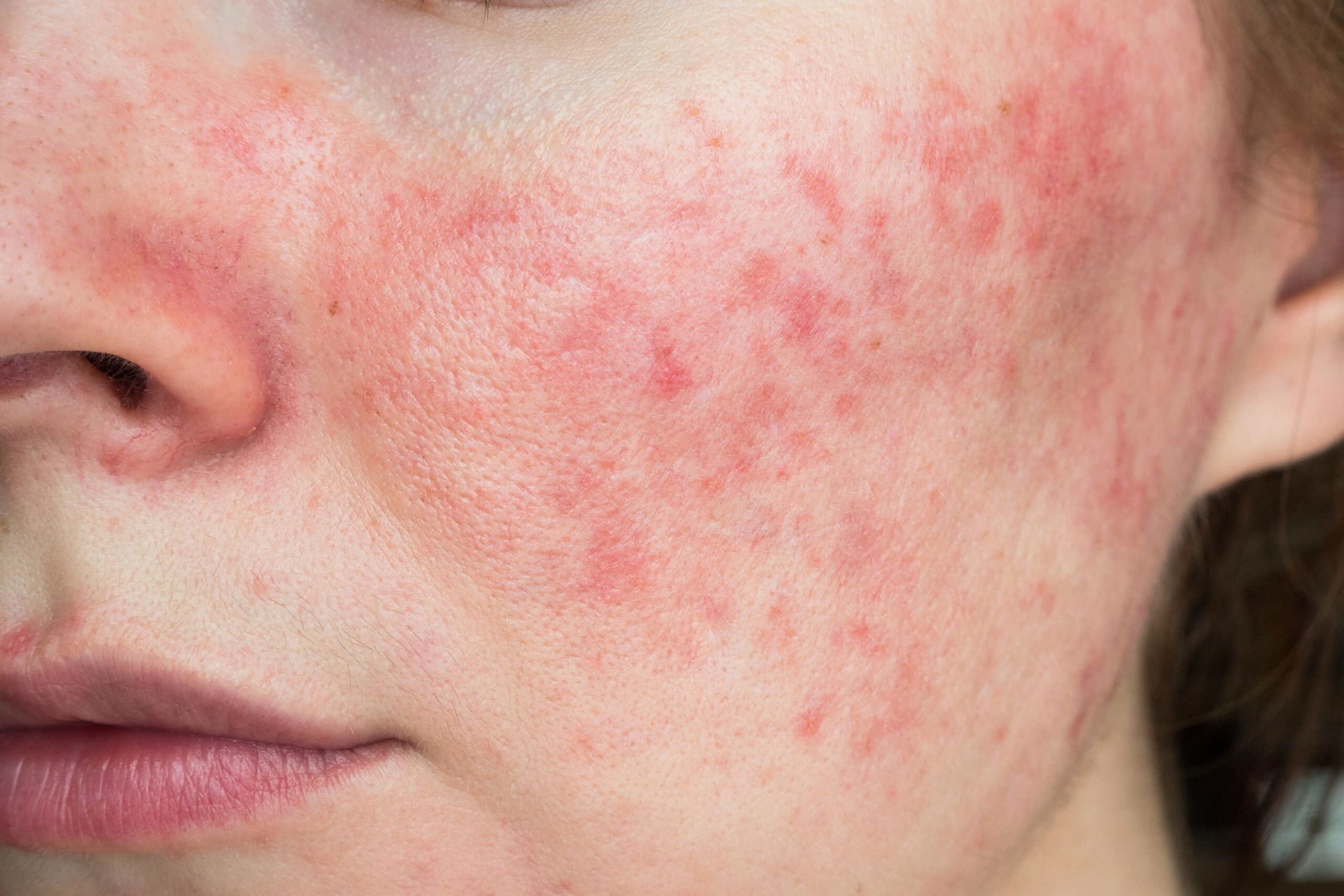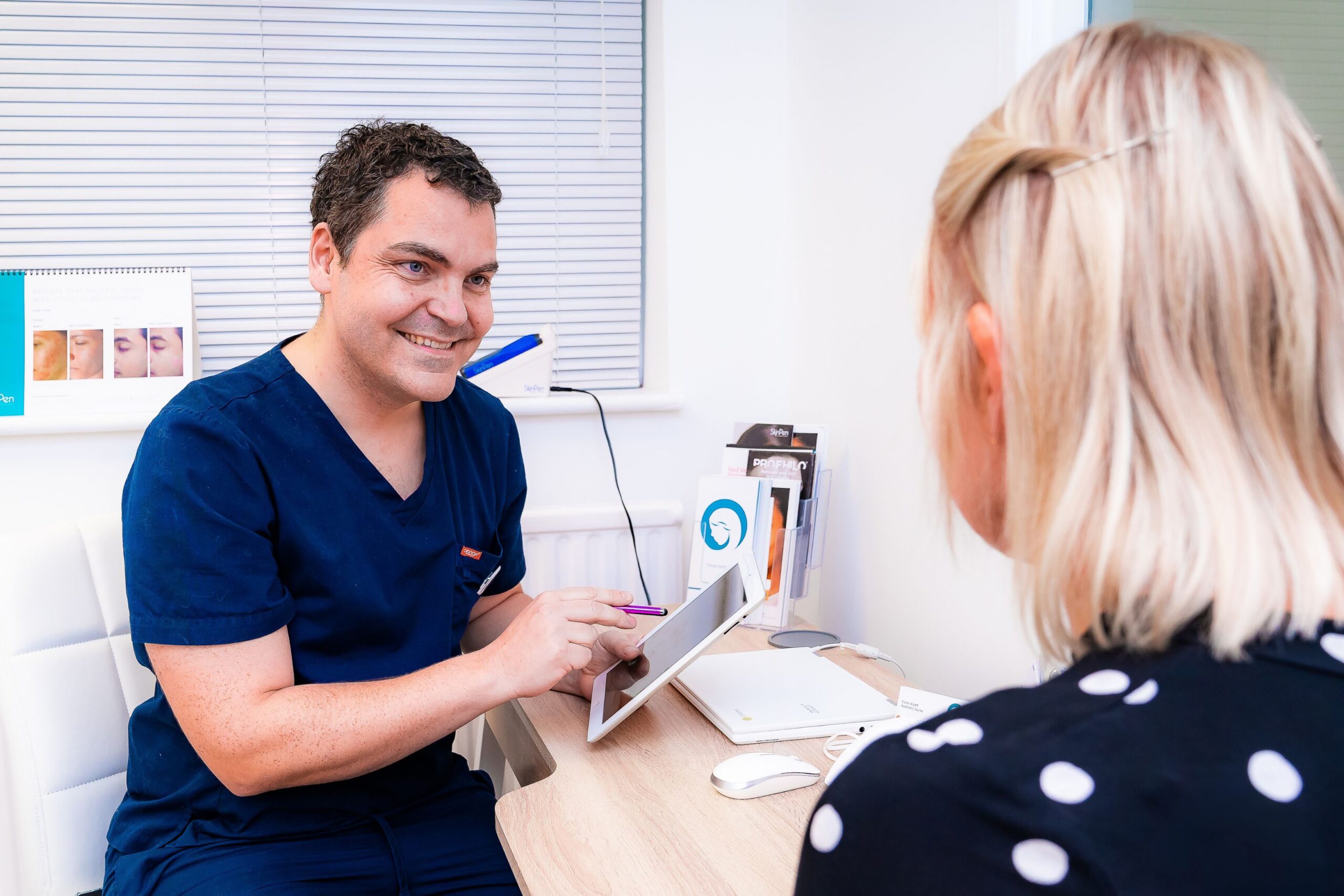
Melasma
Discover what melasma is and how to tackle it effectively.
Our expert team offers tailored treatments, from advanced procedures to personalised skincare routines, ensuring you achieve clear, radiant skin effortlessly.
Say goodbye to melasma and hello to confidence with Freyja Medical.
What is Melasma?
Several factors contribute to the development of melasma, a common skin condition characterised by dark, discolored patches typically appearing on the face, particularly on the cheeks, forehead, upper lip, and chin. It affects both men and women, with a higher prevalence among women, especially during pregnancy or with the use of hormonal contraceptives.
Although the exact cause of melasma is not fully understood, it is influenced by various factors.
-
Hormonal changes
-
Sun exposure
-
Genetics
-
Cosmetics and medications
-
Medical conditions such as thyroid dysfunction
Moreover, individuals with melasma typically combine approaches, including sun protection and topical treatments, to manage the condition effectively. Working closely with a dermatologist is essential for developing a tailored treatment plan based on their specific needs and skin type.

Melasma Treatments
Dermatology Consultation
During a dermatology consultation for melasma at Freyja Medical, our expert dermatologists provide personalised assessments. They tailor treatment plans to each individual based on their unique needs and skin characteristics.
We understand each individual’s unique skin and determine the most effective approach, which may include topical treatments, sun protection, chemical peels, or laser therapy.
Our goal is to empower patients to effectively manage their melasma and achieve clearer, brighter skin.
What causes melasma?
Several factors contribute to the development of melasma, a common skin condition characterised by dark, discolored patches typically appearing on the face, particularly on the cheeks, forehead, upper lip, and chin. It affects both men and women, with a higher prevalence among women, especially during pregnancy or with the use of hormonal contraceptives.
Although the exact cause of melasma is not fully understood, it is influenced by various factors.
- Hormonal Changes: Fluctuations in hormone levels, such as those experienced during pregnancy, hormone therapy, or oral contraceptive use, can trigger melasma. This is why it’s often referred to as “the mask of pregnancy.”
- Sun Exposure: Ultraviolet (UV) radiation from the sun stimulates the production of melanin, the pigment responsible for skin color. Sun exposure can exacerbate melasma and contribute to its development.
- Genetics: There appears to be a genetic predisposition to melasma, as it often runs in families.
- Cosmetics and Medications: Certain cosmetics, skincare products, and medications can make the skin more sensitive to UV radiation and trigger melasma in susceptible individuals.
- Other Factors: Other factors such as thyroid dysfunction and certain medical conditions may also play a role in the development of melasma, although their exact influence is not fully understood.
Can melasma be cured?
Dermatologists can effectively manage and significantly reduce the appearance of melasma with proper treatment and ongoing care, even though it cannot be permanently cured.
Managing factors such as hormonal changes, sun exposure, and genetic predisposition is crucial for controlling the condition. Topical medications, chemical peels, and laser therapy can help fade existing patches and prevent new ones from forming. Additionally, continued sun protection and maintenance are essential to prevent recurrence.
Individuals can work closely with a dermatologist to develop a personalised treatment plan to manage their melasma and maintain clearer, brighter skin over time.
How long does it take to see results from melasma treatments?
The timeframe for seeing results can vary depending on the individual and the type of treatment used. Some patients may see improvements within a few weeks, while others may take several months to see significant results.
Are the treatments painful?
The treatments we offer for melasma generally cause little to no pain or discomfort and are well-tolerated, being minimally invasive.
Are the treatments safe?
Yes, we offer safe treatments that have undergone extensive testing and research to ensure their effectiveness and safety.
Are there any side effects from the treatments?
Some mild side effects, such as redness or swelling, may be associated with certain treatments, but they usually subside within a few days.
How much do the treatments cost?
The cost of melasma treatments can vary depending on the type of treatment used and the severity of the condition. We offer a range of treatment options at different price points and can provide you with a detailed quote during your consultation.
Can I wear makeup after the treatments?
Our team may advise you to avoid wearing makeup for a short period following certain treatments, but we will provide you with specific instructions tailored to your individual treatment plan.
How often do I need to come in for treatments?
The frequency of treatments can vary depending on the type of treatment used and the severity of the condition. Our team will create a personalised treatment plan with you, outlining the recommended frequency of treatments to achieve the best results.
Say Goodbye to Melasma
Schedule your consultation today for just £179

